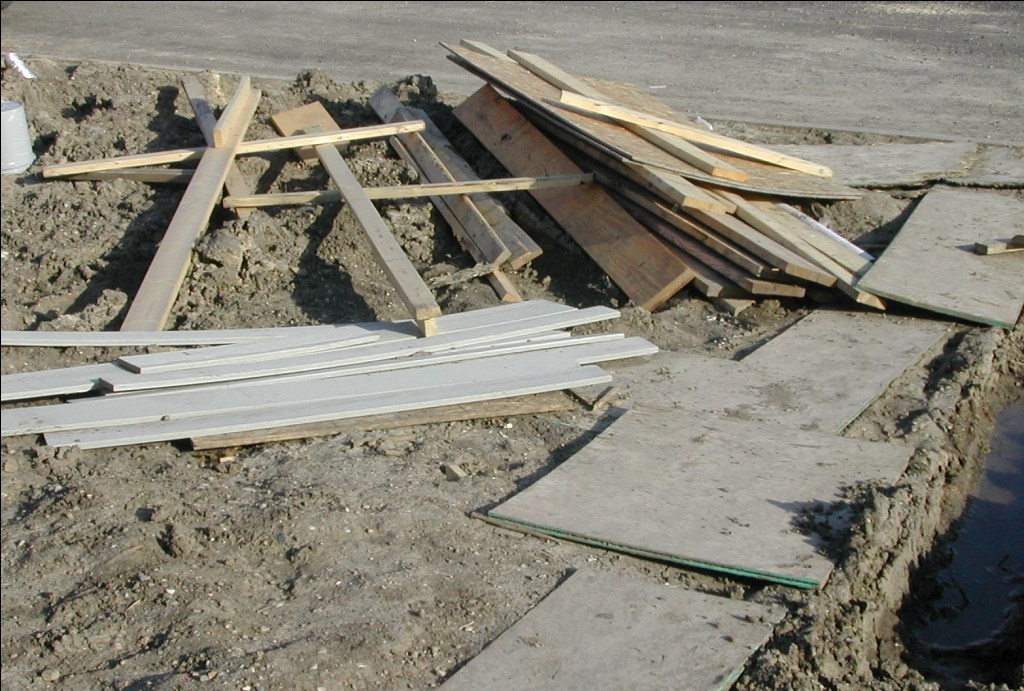It seems like every day we hear of a new green building product that is going to revolutionize our lives. But what about the simple things that can be accomplished with just a little effort and attention? The trash from our remodeling and building projects is a great place to focus our attention. Is it cutting edge and exciting? No. However it has the potential to save you money and keep large quantities of material out of the landfill.
Green Building: Waste Management
Have you driven by a new home site with the piles of construction debris scattered all about? You know the one I’m talking about. The site with the dumpsters overflowing out the top and piles of debris laying all around it? This is expensive and no good for the environment. And some of these people even claim they’re into green building. What if I told you, a great place to start with a green building project is on waste management? What if you could help save the environment while saving some dough?
Repurpose/Recycle
The great thing about green building is that much of it is just good common sense. It takes us back to the basics. You know…good old block and tackle (that’s an armchair quarterback reference…get it, armchair builder? I know…it’s no good when you have to explain it). Yes, recycling takes slightly more effort and more importantly, a change in mindset. Coaching the people working on your home not to just throw material into the dumpster can be a formidable task. However, you just might be able to sell them on the fact that it will be easier in the end.
If you’ve spent any time on a construction site you know how the trades people climb into dumpsters looking for something in particular. Maybe the painter needs some cardboard to prevent over spray from getting on the floor or your trim carpenter needs a scrap 2×4 for a countertop support. The truth is, we are always going back into the garbage pile to re-use items. Why not make it easy by sorting them from the beginning?
Lumber, plastic, cardboard, copper, pvc pipe…etc. When you sort these, it’s easier to repurpose them for green building. But you also get the added bonus of better compaction. Meaning, the more stuff you can fit into each truckload, the fewer pickups you will need. This saves on gas and time.
Restore and Green Building
We talked a little about the ReStore in our Habitat for Humanity video. When you are remodeling and you have some perfectly good light fixtures, doors, trim,…etc. that you are removing, take them down to your local Habitat for Humanity ReStore. Someone else can re-use them preventing more material from going to the landfill. While Habitat for Humanity makes money from the sale that goes toward building houses for deserving families, you get a tax deduction. It’s a win-win-win and a great green building practice.
Save for Future Repairs
This is an important one that people tend to forget. Be sure to save enough siding, roofing, flooring…etc. to make future repairs. It sounds a little crazy. Why would you need to make repairs to a brand new home project? From hail storms to kids playing with permanent markers, you never know when a few extra pieces of material might come in handy to make a repair. And don’t forget, color dye lots change for the same material model with different manufacturing runs. What the heck does that mean? This means that you can get slight variations in colors from two identical products that were manufactured at different times. So, it’s always a good idea to keep some extras from a given shipment. But what does that have to do with green building? Everything. If you can replace just one bad piece of siding versus replacing the hole side of the house to get a color match, we have saved materials (and valuable time).
Product Returns
Most suppliers will take back leftover building materials that are still in new condition. This will typically come with a credit (minus a restocking fee). As a builder, I typically include a note in my scopes of work and specifications for my lumber supplier to pickup leftover lumber at the end of the job for a credit. This helps with your green building initiatives by keeping perfectly good material out of the landfill and helps you be as efficient as possible with your material and budgets. Want to know more about green building? Check out our previous article titled Why Build Green?



